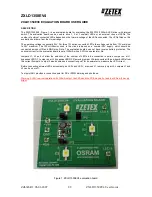
HN440 USER’S GUIDE
4 0 G l o s s a r y
GLOSSARY
Accelerated Graphics Port (AGP). A bus specification that
enables 3-D graphics to display quickly. The interface uses
the computer’s main memory for refreshing the monitor
image and to support the processing required for 3-D image
display. When not being used for accelerated graphics, main
memory is restored to use by the operating system or other
applications.
ACPI (Advanced Configuration & Power Interface). ACPI
defines a flexible and abstract hardware interface that
provides a standard way to integrate power management
features throughout a computer system, including hardware,
operating system, and application software. In addition, ACPI
provides a generic system event mechanism for Plug and Play
(q.v.) and an operating-system-independent interface for
configuration control. Windows 98 is an example of an ACPI-
aware operating system.
ATAPI (Advanced Technology Attachment Packet
Interface).
An interface for removable-media drives. ATAPI
is part of the Enhanced Integrated Drive Electronics (EIDE)
interface, also known as ATA-2.
ATX. ATX is an industry-wide open specification for
motherboard layout and placement. ATX improves
motherboard design by allowing space for more full-length
expansion cards. A double-height aperture is specified for the
rear of the chassis, allowing a greater variety of peripheral
ports. ATX-based computers are also easier to cool.
codec (coder/decoder). In this context, an audio signal
analogue-to-digital, digital-to-analogue coder/decoder.
DIMM (Dual In-line Memory Module). A DIMM is a
circuit board containing memory chips which plugs into a
computer’s motherboard by a row of contacts on the DIMM’s
lower edge.
DMI (Desktop Management Interface). DMI is an industry-
standard interface for keeping track of and monitoring the
status of components in a network of computers.


































